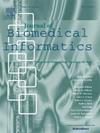A practical guide to usability questionnaires that evaluate clinicians’ perceptions of health information technology
IF 4
2区 医学
Q2 COMPUTER SCIENCE, INTERDISCIPLINARY APPLICATIONS
引用次数: 0
Abstract
Objective
Numerous usability questionnaires are available to evaluate the usability of health information technology (IT). It can be difficult for practitioners to determine which questionnaire most closely aligns with their health IT evaluation goals. Our objective was to develop a practical guide to enable practitioners to select an appropriate usability questionnaire for their health IT evaluation.
Methods
Questionnaires were identified from the literature and input from usability experts. Inclusion criteria included: 1) post-test or post-task usability questionnaire; 2) demonstrated validity, with good internal reliability (Cronbach α ≥ 0.70); 3) freely available for use; 4) applicable across a wide range of health IT products; and 5) demonstrated use with health IT in peer-reviewed literature, even if not originally designed for healthcare.
Results
Criteria were met by seven usability questionnaires. Results include a synopsis of each usability questionnaire along with a matrix to visually compare methodological characteristics across questionnaires. Additionally, results include an analysis of distinguishing methodological strengths and limitations that set each usability questionnaire apart. For each questionnaire, we also outline considerations for use when evaluating health IT.
Conclusion
This novel, practical guide provides an important methodological analysis of currently available usability questionnaires for health IT evaluation. This article can help practitioners make a more efficient, but also well-informed, choice when selecting a usability questionnaire for health IT evaluation. This practical, methodological guide applies to a wide range of health IT products, including electronic health records (EHRs).

可用性问卷的实用指南,用于评估临床医生对卫生信息技术的看法。
目的:利用大量可用性问卷来评估卫生信息技术(IT)的可用性。从业者很难确定哪个问卷最符合他们的健康It评估目标。我们的目标是开发一份实用指南,使从业人员能够为其健康IT评估选择合适的可用性问卷。方法:从文献和可用性专家的输入中确定问卷。纳入标准包括:1)测试后或任务后可用性问卷;2)证明效度,具有良好的内部信度(Cronbach α ≥ 0.70);(三)免费使用;4)适用于广泛的健康IT产品;5)在同行评议的文献中证明了与医疗信息技术的结合使用,即使最初不是为医疗保健设计的。结果:7份可用性问卷符合标准。结果包括每个可用性问卷的摘要以及一个矩阵,以直观地比较问卷的方法特征。此外,结果还包括对区分方法优势和局限性的分析,这些方法优势和局限性使每个可用性问卷分开。对于每个问卷,我们还概述了评估健康IT时要考虑的事项。结论:这份新颖实用的指南对目前可用的健康信息技术评估问卷提供了重要的方法学分析。本文可以帮助从业者在为健康IT评估选择可用性问卷时做出更有效、更明智的选择。这个实用的方法指南适用于广泛的健康IT产品,包括电子健康记录(EHRs)。
本文章由计算机程序翻译,如有差异,请以英文原文为准。
求助全文
约1分钟内获得全文
求助全文
来源期刊

Journal of Biomedical Informatics
医学-计算机:跨学科应用
CiteScore
8.90
自引率
6.70%
发文量
243
审稿时长
32 days
期刊介绍:
The Journal of Biomedical Informatics reflects a commitment to high-quality original research papers, reviews, and commentaries in the area of biomedical informatics methodology. Although we publish articles motivated by applications in the biomedical sciences (for example, clinical medicine, health care, population health, and translational bioinformatics), the journal emphasizes reports of new methodologies and techniques that have general applicability and that form the basis for the evolving science of biomedical informatics. Articles on medical devices; evaluations of implemented systems (including clinical trials of information technologies); or papers that provide insight into a biological process, a specific disease, or treatment options would generally be more suitable for publication in other venues. Papers on applications of signal processing and image analysis are often more suitable for biomedical engineering journals or other informatics journals, although we do publish papers that emphasize the information management and knowledge representation/modeling issues that arise in the storage and use of biological signals and images. System descriptions are welcome if they illustrate and substantiate the underlying methodology that is the principal focus of the report and an effort is made to address the generalizability and/or range of application of that methodology. Note also that, given the international nature of JBI, papers that deal with specific languages other than English, or with country-specific health systems or approaches, are acceptable for JBI only if they offer generalizable lessons that are relevant to the broad JBI readership, regardless of their country, language, culture, or health system.
 求助内容:
求助内容: 应助结果提醒方式:
应助结果提醒方式:


